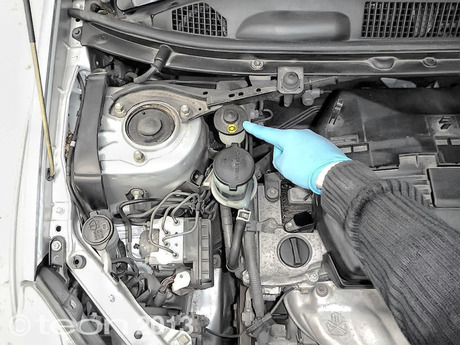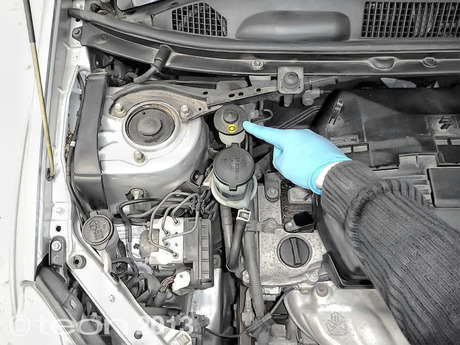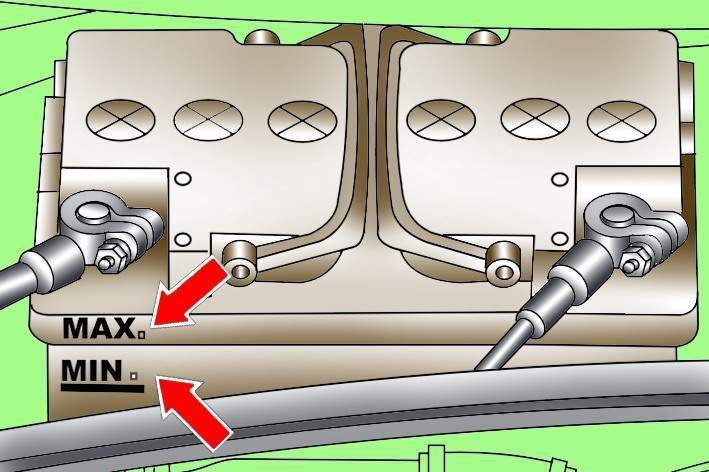Tool:
- Depth gauge
- Tire pressure gauge
- Small flat screwdriver
Parts and consumables:
- soap solution
Notes:
Tire checks are an important preventive measure that can provide information about the condition of your vehicle's steering and suspension and prevent serious damage.
1. Measure the tread depth with a simple measuring tool - a depth gauge.

Note:
When the tread depth reaches the minimum required by law or the tire manufacturer, change the tires.
2. When inspecting tires, note any abnormal tread wear. Signs of uneven tread wear (graded tread wear, patchy tread wear, and increased wear on one side of the wheel) indicate misalignment and/or wheel alignment. If any of these signs of uneven wear are found, find the cause and repair immediately.

3. Check cold tire pressure with a gauge before or after a ride. Check the data obtained with the values indicated by the manufacturer on the inside of the driver's door.

Note:
Excessive tire pressure causes accelerated wear of the middle part of the tread, which reduces traction, reduces the damping effect of the tire and increases the risk of tire blowout.
If the tire pressure drops, first check the tires for punctures or cuts. If the tire has no defects, check the condition and tightness of the spool. To make it easier to find air leaks, apply soapy water to the suspected leak. If there is a leak, the soap solution will begin to bubble.
4. Regularly check the tires for cuts or bulges, especially on the side surfaces.

5. Carefully inspect the inner sidewall of each tire for traces of brake fluid. If traces of brake fluid are visible, check the condition of the wheel brakes immediately.
6. Remove stones or sharp objects stuck in the tread with a screwdriver.

7. Signs of wheel imbalance are usually the vibration of the car body (at a speed of about 90 km / h), although in most cases the vibration is felt through the steering wheel.
8. Be aware that worn or damaged steering and suspension parts can cause excessive tire wear.
The article is missing:
- Photo of parts and consumables
Source: carpedia.club






![2 generation [2000 - 2003]](/uploads/toyota-rav-4-ii-11109.jpg)
![3 generation [2005 - 2009]](/uploads/Toyota_RAV_4_-_2006_-_2009_.jpg)
![4 generation [2012 - 2015]](/uploads/Toyota_RAV_4_-_2012-2015_.jpg)